Impact of Droplet Size on Herbicide Efficacy
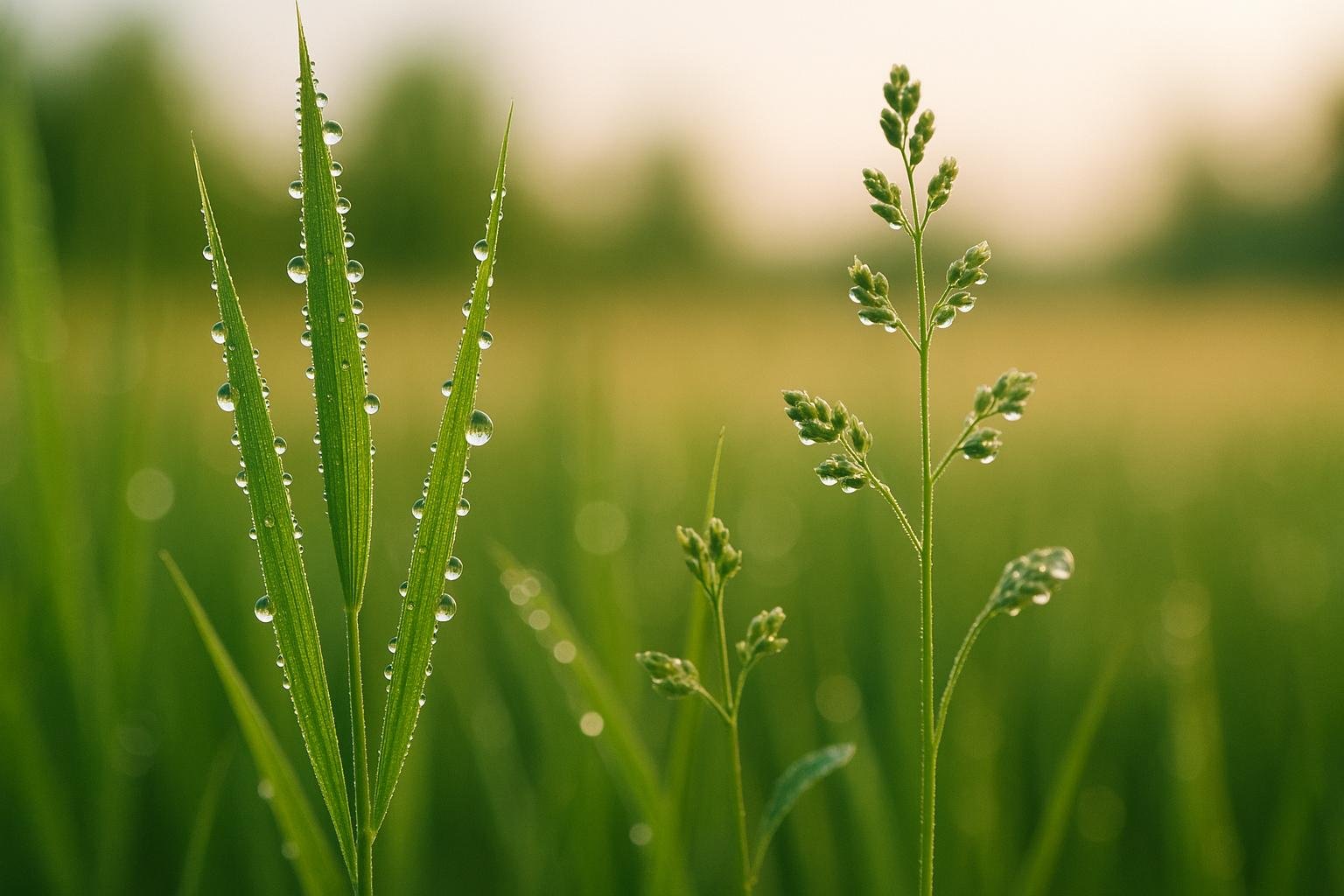
Droplet size directly affects how well herbicides work by influencing coverage, drift, and penetration. Smaller droplets provide better coverage but are more prone to drift and evaporation. Larger droplets reduce drift but may lead to uneven coverage and poor penetration. The key is balancing droplet size based on the herbicide type, target weeds, and environmental conditions to maximize effectiveness while minimizing waste.
Key Takeaways:
- Small droplets (<150 µm): Great for coverage and canopy penetration but highly susceptible to drift.
- Medium droplets (150–340 µm): Balanced option with moderate coverage and drift control.
- Large droplets (>340 µm): Minimize drift but risk uneven coverage and runoff.
- Environmental factors: Wind, temperature, and humidity significantly influence droplet behavior.
- Nozzle and pressure: Proper nozzle selection and pressure settings are critical for achieving the desired droplet size.
Quick Tip: Use nozzles that produce droplets with a Volume Median Diameter (VMD) above 300 µm to reduce drift without compromising herbicide performance.
The importance of optimising droplet size to ensure proper spray application.

How Droplet Size Impacts Herbicide Performance
Now that we’ve covered the basics of droplet definitions and performance factors, let’s dive into how droplet size influences herbicide effectiveness. Both small and large droplets come with their own set of strengths and limitations, and understanding these can help fine-tune your application strategy for better weed control.
Small Droplets: Pros and Cons
Small droplets are great for coverage. They spread evenly across surfaces and can work their way through thick foliage, ensuring herbicides reach deeper into plants where larger droplets might not [2]. This makes them especially useful in dense weed canopies, where they can navigate past obstacles to hit those hard-to-reach areas [8].
But small droplets aren’t without their issues. Droplets under 150 microns are classified as fines [2], which means they’re more vulnerable to wind drift and evaporation. This can lead to herbicide loss, reducing its effectiveness where it’s needed most [2][6]. They’re also prone to moving off-target, which can cause unintended damage to surrounding areas [6].
Large Droplets: Pros and Cons
On the flip side, large droplets are excellent at minimizing drift. Their heavier weight helps them drop more directly onto the target, reducing the risk of evaporation [2]. They also deliver more liquid per droplet, which can be helpful in certain scenarios.
However, as Andy Carriger, an Enlist field specialist at Corteva Agriscience, points out, overly large droplets can lead to uneven coverage. He explains:
"It's like you've been putting bowling ball-size droplets on the plants with your previous nozzle setup. Your coverage is going to be less than ideal for small weeds. You need ping pong-ball size droplets." [7]
This analogy underscores the main drawback of large droplets - they don’t always provide consistent coverage, which can lead to poor absorption and less effective treatment [5]. While their slower speeds reduce rebound compared to smaller droplets, their limited penetration means they mostly coat the outer canopy, leaving inner areas untreated [8].
Finding the Best Droplet Size
The trick is finding a balance between the benefits and challenges of both small and large droplets. Coarse sprays often strike this balance, offering better herbicide efficacy while reducing drift compared to finer sprays [3]. Each herbicide system, however, has its own requirements. Carriger emphasizes this point when discussing the Enlist system:
"If you're used to other technologies, like LibertyLink or dicamba systems, the nozzles are quite different than what we recommend with the Enlist system. We recommend a low-end of a coarse droplet range, somewhere in the 200- to 250-micron droplet size instead of a very large 500 micron or fine 100- to 125-micron size." [7]
For Enlist herbicides, the 200- to 250-micron range ensures better coverage for smaller weeds compared to ultra-coarse nozzles [7]. Medium-sized droplets often hit the sweet spot, providing sufficient coverage while keeping drift in check [6].
Tom Wolf, also known as Nozzle_Guy, offers practical advice for application:
"Simply put, broadcast agricultural sprays in field crops perform reliably when applied as Coarse or Very Coarse sprays at 7–12 US gpa. There is no need to spray any finer than Coarse for good efficacy, as coverage is already sufficient and any additional coverage has small marginal returns." [8]
The goal is to find the largest droplet size that maintains effectiveness while minimizing drift. Going too coarse can reduce efficacy, so it’s about striking the right balance [10].
Getting droplet size right doesn’t just improve weed control - it can also save money. By optimizing droplet size and cutting down on off-target movement, herbicide waste can be reduced by up to 30% [5]. This makes the process not only better for your wallet but also more environmentally conscious.
Factors That Influence Droplet Size and Application
Three main elements determine how spray droplets form: the herbicide formulation, the spray equipment used, and the surrounding environmental conditions.
How Herbicide Formulation and Additives Affect Droplet Size
The size of spray droplets plays a crucial role in herbicide effectiveness, and this is heavily influenced by the mixture in the spray tank. Surfactants, which are common additives, play a big part in modifying droplet behavior by addressing water-related challenges that impact droplet size [11].
Different surfactants have specific roles:
- Wetting surfactants: These reduce surface tension, allowing droplets to spread over a larger area.
- Drift control surfactants: By increasing the viscosity of the spray mixture, they produce larger droplets that are less likely to drift.
- Sinking surfactants: These create dense droplets designed for applications in aquatic environments [11].
The physical properties of the spray mixture, like viscosity and surface tension, also affect droplet size. Some adjuvants can fine-tune these properties. For example, the Aureo adjuvant has been shown to reduce the Relative Span Factor by 30.3%, ensuring more consistent droplet sizes. Meanwhile, BREAK-THRU lowers surface tension and contact angle without increasing droplet size [12].
| Adjuvant Type | Effect on Droplet Size | How It Works |
|---|---|---|
| Wetting Surfactants | Reduces surface tension | Expands coverage by spreading droplets wider [11] |
| Drift Control Surfactants | Increases viscosity | Produces larger droplets to minimize drift [11] |
| Sinking Surfactants | Forms thick droplets | Ideal for aquatic applications to prevent drift [11] |
The choice of oil-based adjuvants also matters. Methylated Seed Oils (MSOs) are often more aggressive than Crop Oil Concentrates (COCs) in breaking down the leaf cuticle, which speeds up herbicide absorption but can increase the risk of crop damage [13].
Brewer International underscores the importance of selecting the right combination:
"Carefully read label instructions for the pesticide and surfactant to ensure you create the best spray mixture that addresses droplet size, lowers drift potential, and maximizes pest control." [11]
Next, let’s look at how spray equipment impacts droplet formation.
Spray Equipment and Nozzle Selection Effects
The design of spray equipment, particularly the nozzles, plays a huge role in determining droplet size. Nozzle manufacturers provide detailed charts that show the droplet sizes produced under different operating pressures [2].
Pressure is a key factor: higher pressure produces finer droplets, while lower pressure results in coarser ones [2]. Different nozzle technologies also offer varying levels of drift control. For example:
- Pre-orifice flat fan nozzles: These can reduce drift-prone droplets by over 50% compared to extended-range flat fan nozzles.
- Air induction flat fan nozzles: These can cut drift-prone droplets by 80% or more but typically require higher operating pressures than standard hydraulic nozzles [14].
For herbicides that rely on contact, pre-orifice nozzles are often the go-to choice because they produce finer sprays [14].
Beyond equipment, the weather significantly influences how droplets behave after leaving the nozzle.
Environmental Conditions and Droplet Behavior
Weather conditions can dramatically change how spray droplets behave once they’re airborne. High temperatures and low humidity speed up droplet evaporation, increasing the chances of drift [15][16].
For example:
- At 50°F with 80% humidity and 10 mph winds, about 1% of the spray volume drifts 30 feet.
- At 86°F with 40% humidity, that figure doubles to 2%.
- With winds of 15 mph, drift can climb to 3.5% [15].
Small droplets are especially at risk. Under 60% humidity, 50-micron droplets travel increasing distances as wind speeds rise:
- At 2 mph, they travel 17.2 feet.
- At 10 mph, they can reach 55.3 feet before evaporating entirely [17].
In all tested wind speeds and humidity levels, droplets 50 microns or smaller completely evaporated before reaching 18 inches below the nozzle [17].
Temperature inversions create additional challenges. These occur under stable air conditions, usually when wind speeds are below 5 mph, causing small droplets to remain suspended and drift over long distances. Amy Bowser, MSU Extension Pesticide Education Technician, highlights the importance of careful planning:
"The applicator should carefully consider pesticide formulations, application equipment, weather conditions, sensitive sites, non-target organisms and the potential impacts related to the toxicity of the pesticide when considering drift." [18]
Wind conditions also demand close attention. Still air (0–1.2 mph) can lead to vapor drift, where fine droplets remain suspended and evaporate long after spraying. Light to gentle breezes (2–6 mph) are ideal, but winds above 6 mph may require stopping spraying altogether.
The scale of drift-related losses is staggering, with up to 70 million pounds of pesticides lost annually due to drift [18].
sbb-itb-4d6a8dd
🚀 Ready to Reinvent Your Garden?
Join thousands of homeowners who have transformed their gardens using our AI design tool. Upload one photo to explore endless possibilities.
Get your AI garden designs →Measuring and Monitoring Droplet Size
Accurate droplet measurement is essential for effective herbicide application. Getting the droplet size right ensures proper coverage and optimal performance. Without consistent monitoring, it’s tough to confirm that your spray equipment is producing droplets in the ideal size range. Thankfully, there are several tools and techniques available to measure and track droplet performance.
Equipment for Droplet Size Measurement
Modern methods for measuring droplet size fall into two categories: non-intrusive and intrusive. Non-intrusive techniques, like laser diffraction, rely on analyzing how light scatters when it hits droplets. Large droplets scatter light at smaller angles, while smaller ones scatter it at larger angles [24]. The American Society of Agricultural and Biological Engineers (ASABE) has even developed a droplet size classification system (ASABE S-572.1) that categorizes droplets from extremely fine to ultra coarse, based on their size in microns [1]. However, laser diffraction can sometimes produce errors due to multiple light scatterings and requires precise alignment.
Another advanced method is Phase Doppler Particle Analysis (PDPA), which measures both the size and velocity of individual droplets. This method works best with uniform, spherical droplets but has its limitations [19]. For simpler, low-cost applications, water-sensitive papers provide a practical solution. These papers change color when sprayed, recording coverage patterns and offering an indication of droplet size [19].
Here’s a quick comparison of common measurement methods:
| Measurement Method | Key Advantages | Limitations |
|---|---|---|
| Laser Diffraction | Fast, precise, works across a broad range | Needs careful alignment; prone to errors |
| PDPA | Captures size and velocity of droplets | Limited to spherical droplets |
| High-Speed Imaging | Real-time observation of droplet behavior | Requires specialized equipment |
| Water-Sensitive Papers | Simple, affordable | Less precise |
Beyond these traditional methods, AI-driven systems are taking droplet monitoring to the next level.
AI and Automated Droplet Monitoring Systems
AI technology is transforming how we monitor and optimize spray performance. These systems analyze spray data in real time, adjusting parameters like flow rate based on environmental factors such as temperature, pressure, humidity, and viscosity. By incorporating deep learning, AI systems can account for variables like droplet distance, velocity, and appearance, providing a level of precision that traditional methods can’t match [20].
The results? Reduced chemical waste - up to 40% - and improved efficiency by as much as 30% [21]. For example, a food processing plant cut unscheduled maintenance by 40% using AI-driven nozzle monitoring, while a mining company reduced water waste by 35% through AI-powered dust suppression [21].
Emerging applications of AI in this field include self-adjusting spray nozzles for precision tasks, drone spraying systems for agriculture, and digital twins that simulate real-time performance. Machine learning is also being used to classify spray patterns and evaluate droplet size and deposition more accurately than ever before [19].
To keep these advanced systems running smoothly, proper maintenance is key.
Maintenance Practices for Consistent Application
Regular maintenance and equipment checks are critical for ensuring consistent droplet measurement. Instruments should be verified routinely using certified standards and fixed-gap reticules. Following standard operating procedures (SOPs) for conditions like optical alignment, refractive index settings, and measurement ranges helps maintain reliable performance [22][23][25].
For AI systems, scheduled software updates and sensor calibrations are essential. While laser diffraction instruments don’t require user calibration, regular verification against certified standards is still necessary. ISO13320 provides guidelines for proper laser diffraction procedures [24].
To maintain reliability, establish an operational qualification schedule. This should include regular checks of optical components, verification of measurement ranges, and confirmation that software settings align with your specific application needs [22]. These disciplined practices ensure accurate droplet monitoring, which directly improves herbicide effectiveness and minimizes chemical waste.
Comparing Different Droplet Sizes
Understanding how various droplet sizes perform can help you make smarter decisions about herbicide applications. Each size comes with its own set of benefits and challenges, directly influencing the success of weed control efforts.
Droplet Size Comparison Table: Benefits and Drawbacks
The relationship between droplet size and performance becomes clearer when you examine specific factors side by side. Here's a breakdown of how small, medium, and large droplets compare:
| Factor | Small Droplets (<150 µm) | Medium Droplets (150–340 µm) | Large Droplets (>340 µm) |
|---|---|---|---|
| Drift Potential | High – most prone to drift [1] | Moderate – balanced drift control | Low – minimal drift risk |
| Coverage Quality | High – excellent surface coverage [2] | Moderate – adequate coverage | Low – may not adequately cover targets |
| Canopy Penetration | High – easily penetrates dense foliage [2] | Moderate – some penetration | Low – struggles with dense canopies |
| Surface Adherence | High – good retention on plant surfaces [2] | Moderate – reasonable adherence | Low – may bounce off leaves |
| Evaporation Risk | High – evaporates quickly [2] | Moderate – some evaporation loss | Low – resists evaporation |
Larger droplets are heavier, which reduces their risk of drifting [1]. For example, a 5 µm fog droplet can take around 66 minutes to fall just 10 feet and may travel up to 3 miles in a 3 mph wind [1]. On the other hand, small droplets are better at navigating air currents but are more prone to evaporation and drift [8]. Large droplets, while less affected by air movement, often struggle to provide adequate coverage, which can limit herbicide absorption [8]. These differences highlight the importance of tailoring droplet size to your specific herbicide and environmental conditions.
Selecting the Right Droplet Size for Your Application
Choosing the right droplet size is a strategic decision influenced by your herbicide type, target weeds, weather, and application setup. Droplet size plays a crucial role in herbicide effectiveness, but the "best" size depends on your specific needs [9].
For contact herbicides like glufosinate, smaller droplets often perform better. Field trials in western Nebraska during 2016 and 2017 showed that Palmer amaranth control with Liberty® was optimized at 5 GPA using 600 µm droplets and at 20 GPA with 150 µm droplets [9]. Interestingly, 90% of maximum weed control was achieved with droplet sizes of 638 µm and 675 µm, depending on the carrier volume [9].
Systemic herbicides, however, are more forgiving when it comes to droplet size. Studies have shown that glyphosate, clodinafop, imazamox plus imazapyr, and metribuzin produced similar weed control results regardless of nozzle type [3]. For glyphosate-resistant kochia, the best results were achieved with a 400 µm droplet when using Enlist Duo® or Roundup WeatherMax® mixed with Clarity® [9].
Different herbicides also react differently to droplet size. Ultra Blazer® works best with a 300 µm droplet [9], while Cobra®'s performance is more influenced by carrier volume than droplet size. Ultra Blazer®, in particular, is highly sensitive to changes in droplet size [9].
André Sabeeney, Technical Marketing Lead at Nufarm, sheds light on the practical limits of droplet size:
"Droplets less than 100 microns in diameter only have enough inertia to travel approximately 34 cm downwards after exiting the nozzle... Conversely, droplets over 720 microns are likely to bounce off the leaf surface or run off vertical surfaces." [4]
He stresses that for successful spraying, the product must not only hit the target but also remain on the plant long enough to be absorbed [4].
In conditions where drift is a concern, coarse sprays can deliver comparable results to fine or medium sprays while significantly reducing drift potential [3]. Low-drift nozzles, for example, can cut drift by 50–90% compared to traditional flat fan nozzles [18]. This is especially important given that up to 70 million pounds of pesticides are lost annually due to drift [18].
When using larger droplets to minimize drift, consider increasing carrier volumes (GPA) to maintain effective coverage, particularly when working with systemic herbicides [9]. Tailoring your application parameters, including droplet size, to your specific weed management needs is key to achieving the best results.
Summary and Key Points
Droplet size plays a crucial role in determining the effectiveness of herbicide applications. The way droplet size interacts with herbicide performance directly impacts weed control and environmental safety. Understanding this relationship is key to successful weed management.
How Droplet Size Affects Herbicide Results
Droplet size and its physical properties significantly influence how herbicides perform. For systemic herbicides, smaller droplets often enhance effectiveness when the carrier volume remains constant [26]. Why? Because halving the droplet diameter increases the number of droplets by a factor of eight [1], which means more contact points with weeds.
Smaller droplets also excel at penetrating dense plant canopies and sticking to hard-to-wet surfaces, such as those found on monocotyledons with vertical structures [26]. However, droplets smaller than 150 microns, while excellent for canopy penetration, are highly susceptible to drift [1]. This highlights the need to balance thorough coverage with minimizing unintended environmental impact.
Droplet weight is another important factor. Doubling the droplet diameter increases its weight eightfold [1]. Heavier droplets are less likely to drift but may not provide adequate coverage for certain weed species. Research shows that in 20% of experiments, changes in droplet size had no effect on herbicide performance, and in 9% of cases, smaller droplets actually reduced effectiveness [26]. Additionally, systemic herbicides generally perform better with smaller droplets compared to contact herbicides [26].
Best Practices for Herbicide Application Success
To ensure effective herbicide application, consider these practical strategies:
- Match Droplet Size to the Application: The ideal droplet size depends on the type of herbicide, target weeds, and environmental conditions. The Volume Median Diameter (VMD) is a valuable tool for measuring droplet size, and many pesticide labels include specific recommendations for optimal results [1].
- Choose the Right Nozzle: Use nozzles that produce VMDs above 300 microns to reduce drift. The American Society of Agricultural and Biological Engineers (ASABE) classification system can guide nozzle selection, with categories ranging from Extremely Fine to Ultra Coarse [1].
- Monitor Environmental Conditions: Avoid spraying during temperature inversions or high-evaporation conditions, as these can counteract the benefits of proper droplet size. With an estimated 70 million pounds of pesticides lost to drift annually [18], timing your applications for favorable weather is critical.
- Maintain Equipment: Regularly clean nozzles and inspect equipment to ensure consistent droplet production. Advanced technologies like pulse-width modulation (PWM) sprayers can help maintain the desired droplet size, even at varying sprayer speeds [9].
- Increase Carrier Volume When Needed: Using larger droplets? Boosting carrier volume can improve coverage and maintain herbicide effectiveness, especially in conditions prone to drift [9].
FAQs
What is the best droplet size for applying herbicides effectively?
Choosing the right droplet size plays a key role in ensuring herbicides are applied effectively. Most product labels will specify the recommended droplet size, which usually falls between medium and slightly coarse droplets (roughly 200 to 350 microns).
Smaller droplets can provide better coverage but are much more likely to drift, particularly in breezy conditions. On the flip side, larger droplets help minimize drift but might not offer sufficient coverage for certain weed species. When deciding on the ideal droplet size, you should also factor in the type of herbicide, the weeds you're targeting, and environmental conditions like wind and humidity.
To achieve optimal results, opt for nozzles designed to generate the recommended droplet size and make adjustments based on your specific needs. If you're uncertain, consult expert resources or guidelines to fine-tune your application strategy.
How does using the wrong droplet size during herbicide application affect the environment?
Using the wrong droplet size when applying herbicides can lead to serious environmental issues. If the droplets are too small, they’re more likely to drift away from the intended area. This can result in contamination of nearby water sources, soil, and plants that weren’t meant to be affected, potentially disrupting local ecosystems and harming biodiversity.
Herbicide drift doesn’t just stop there - it can also impact beneficial insects, wildlife, and even nearby crops, causing unintended damage. Choosing the right droplet size is crucial for reducing these risks while ensuring effective weed control that’s also environmentally responsible.
How do surfactants and additives affect droplet size and herbicide performance?
Surfactants and additives are crucial in shaping droplet size, which directly influences how well herbicides work. Surfactants lower surface tension, leading to smaller droplets. These smaller droplets spread more easily across plant surfaces, boosting coverage and absorption, which helps herbicides penetrate weeds more effectively.
In contrast, some additives, like oil-based adjuvants, can produce larger droplets. While larger droplets are less likely to drift, they might not provide enough coverage, particularly on dense vegetation or weeds with small leaves. Finding the right mix of surfactants and additives is key to fine-tuning herbicide performance for your specific weed control challenges.
🎨 Visualize Your Dream Garden Today!
Transform any outdoor space into a professional landscape design in minutes. Just upload a photo, choose your style, and let our AI do the rest.
Start your garden transformation now →Related posts
Related Articles
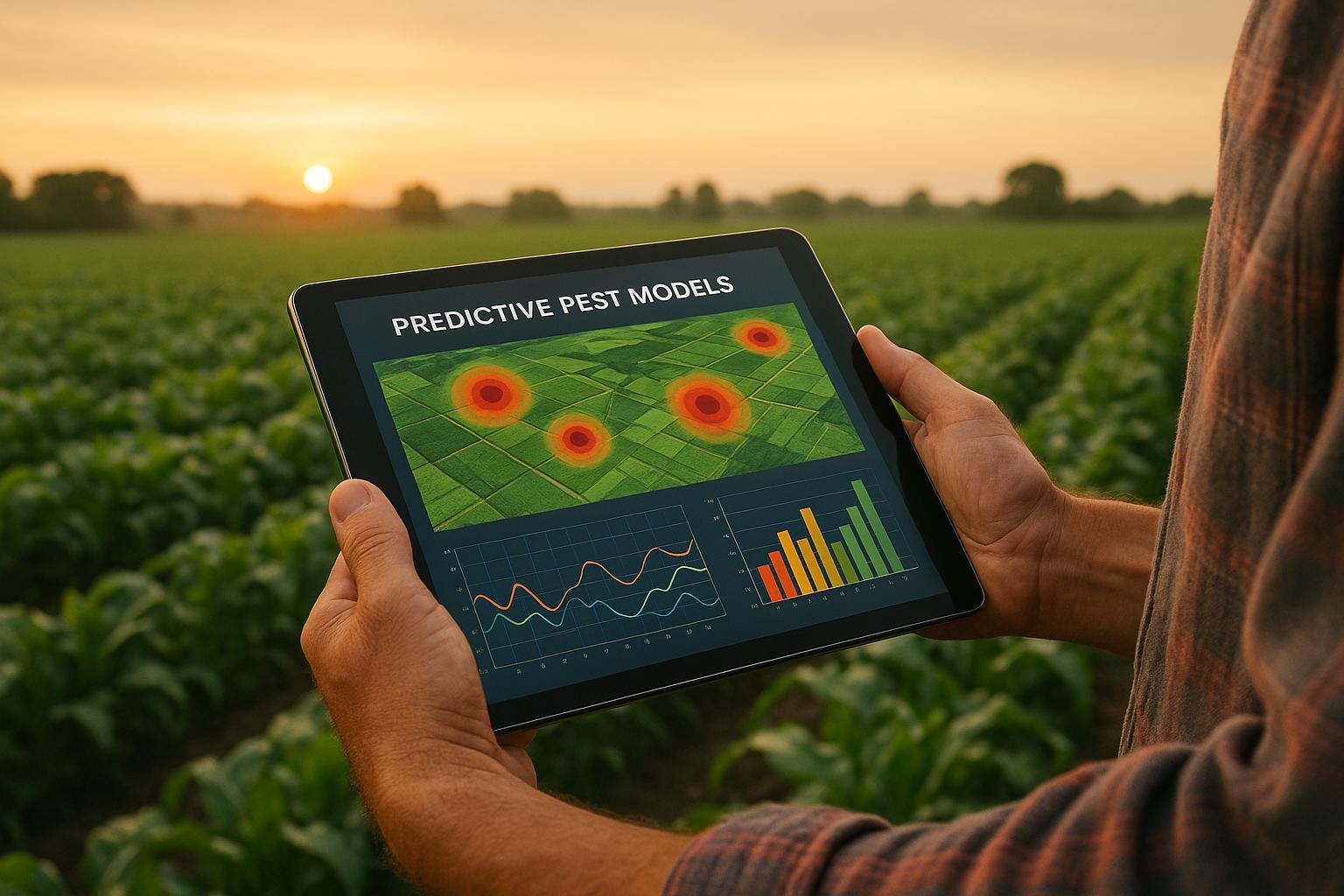
Predictive Pest Models: How They Work
Explore how predictive pest models harness data and AI to forecast infestations, reduce pesticide use, and enhance crop yields sustainably.

Revolutionize Your Garden Design with AI Technology: Benefits and Tradeoffs
Discover how Garden AI Planners can optimize your garden space, increase productivity, and the tradeoffs to consider. Learn more about utilizing AI technology in gardening.
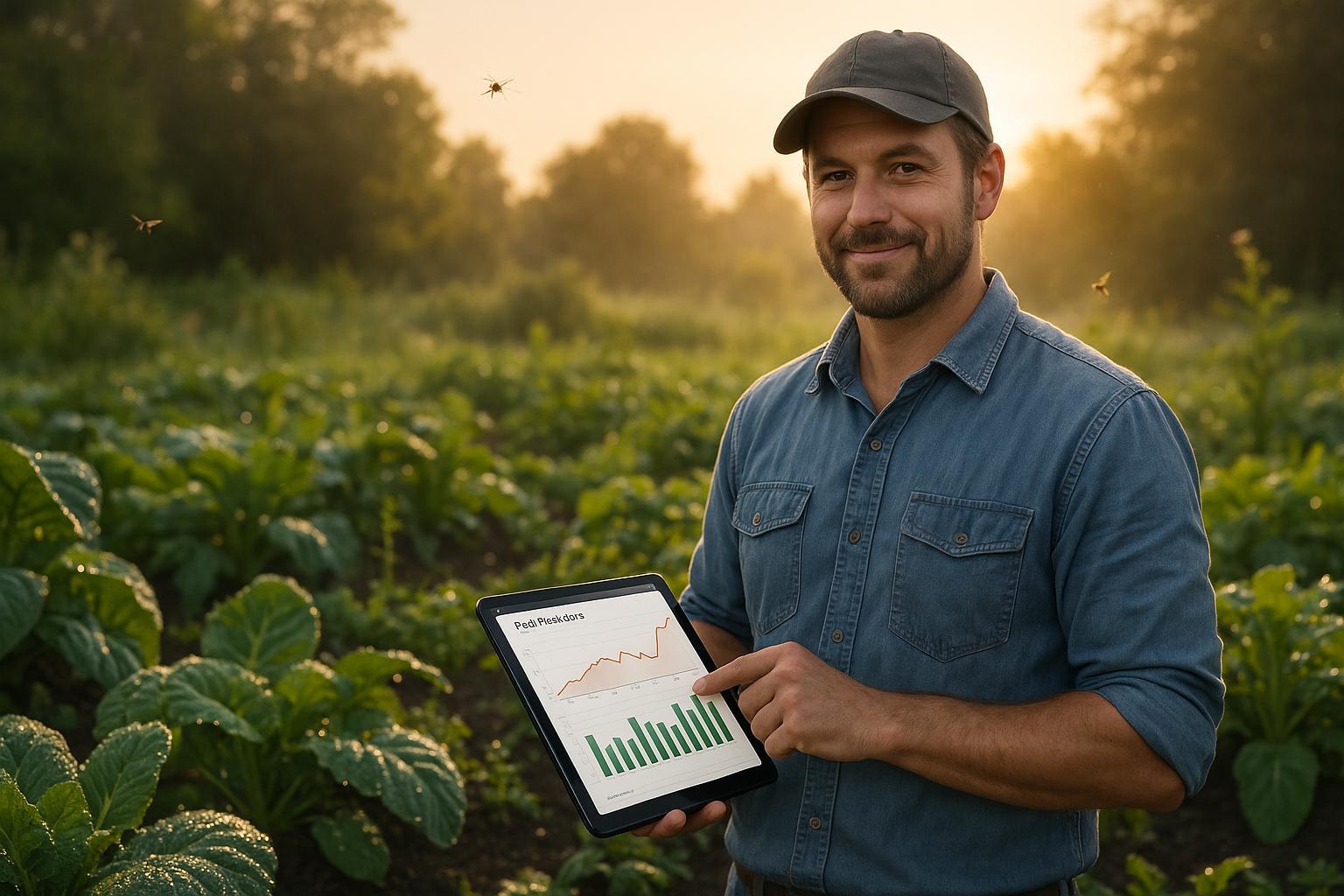
FAQs on AI Pest Prediction Models
Explore how AI pest prediction models revolutionize pest management, offering early detection, reduced pesticide use, and proactive gardening solutions.
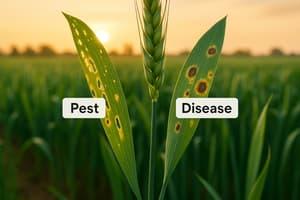
Pest vs. Disease: AI Detection Methods
Explore how AI distinguishes between pests and diseases in plants, enhancing detection methods for better garden and crop management.
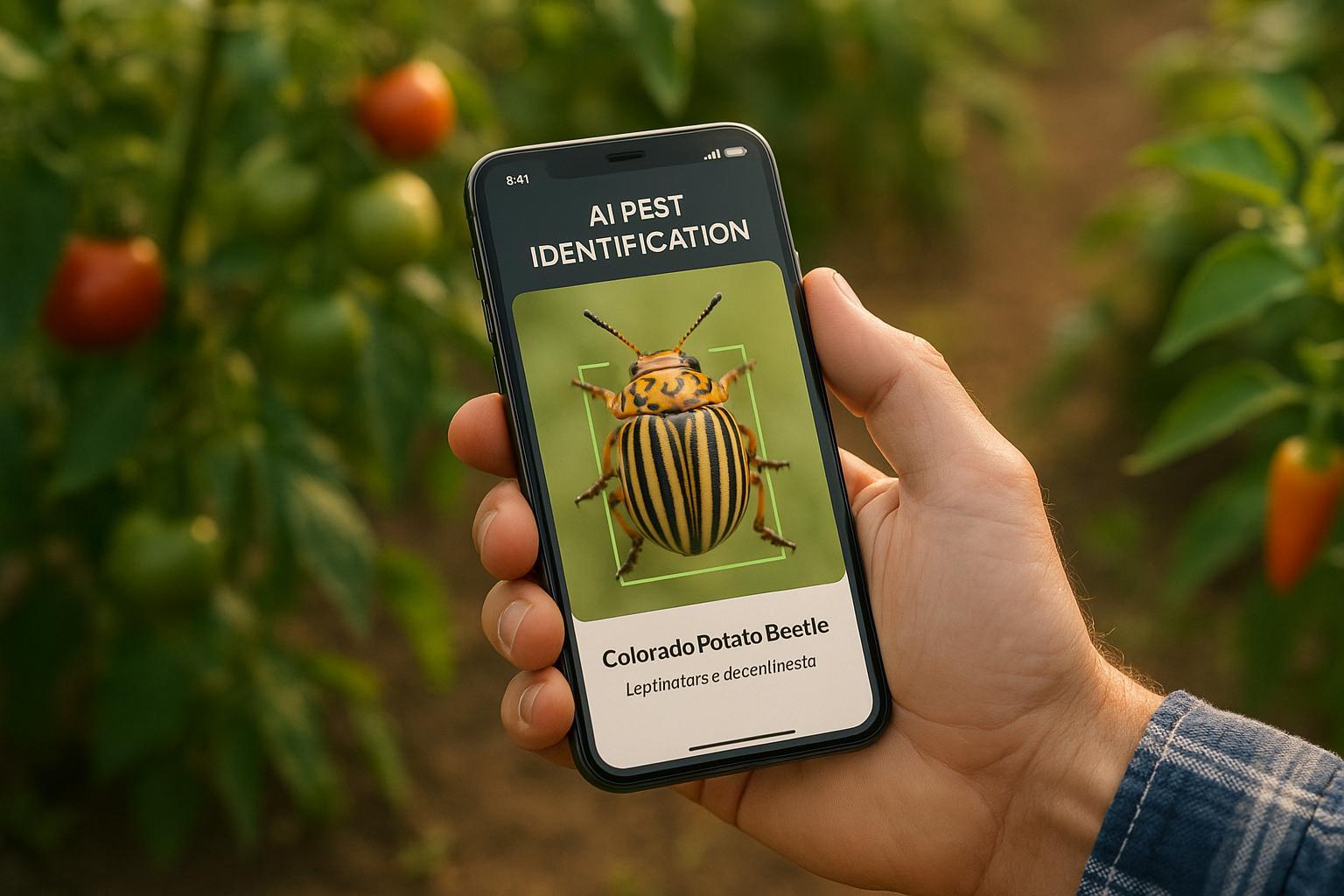
Ultimate Guide to AI Pest Identification Tools
Explore how AI pest identification tools revolutionize pest management for gardeners and farmers, offering efficiency, accuracy, and sustainability.
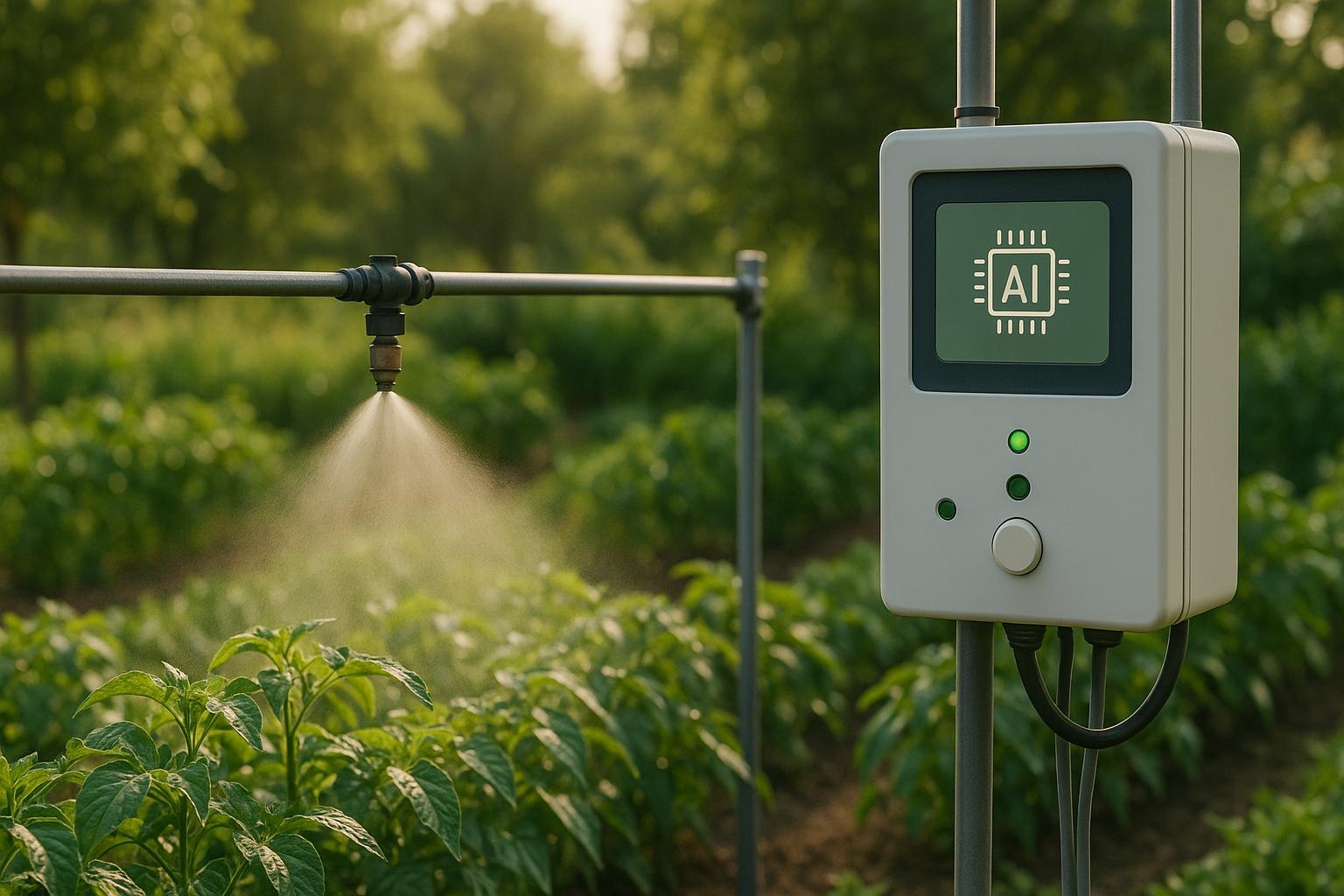
Checklist for Setting Up AI Spray Systems
Learn how to effectively set up and maintain AI spray systems for precise pest control in your garden, optimizing health and minimizing chemical use.